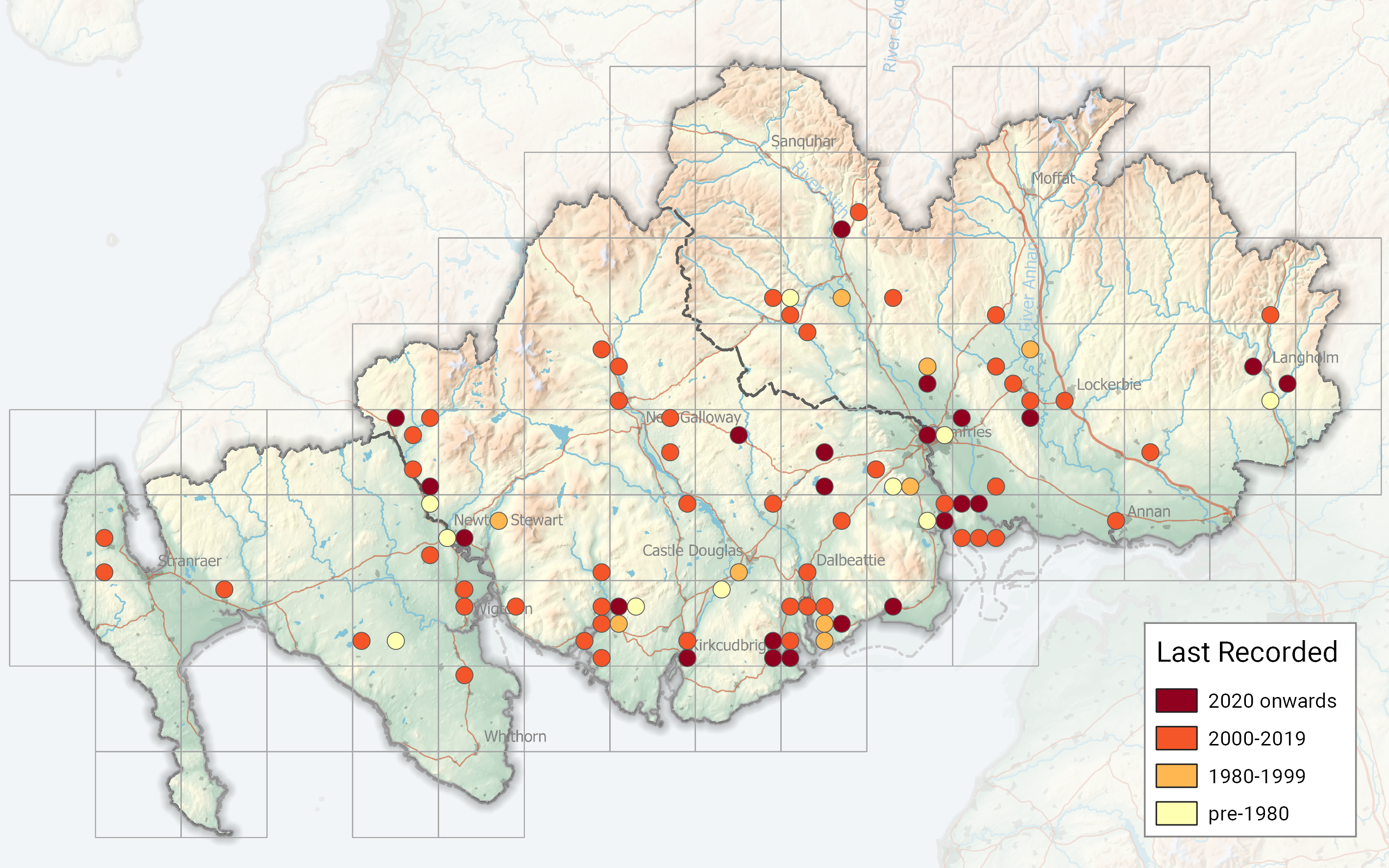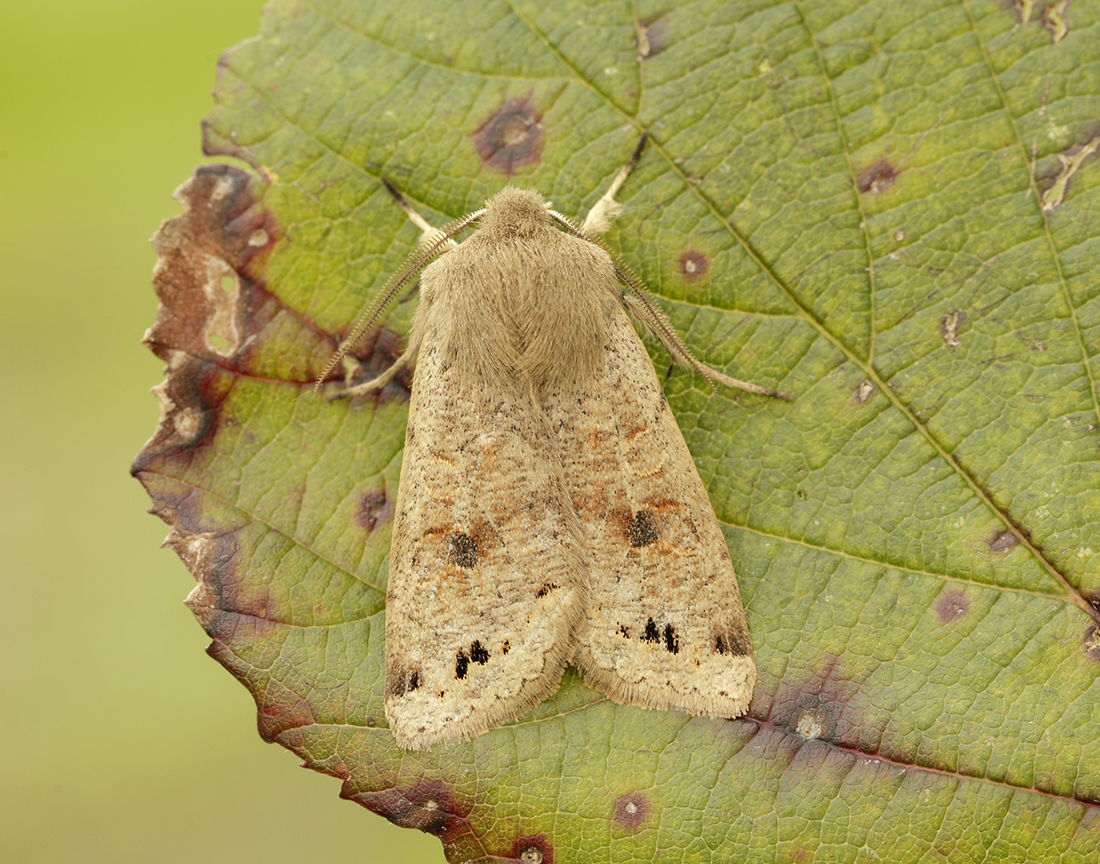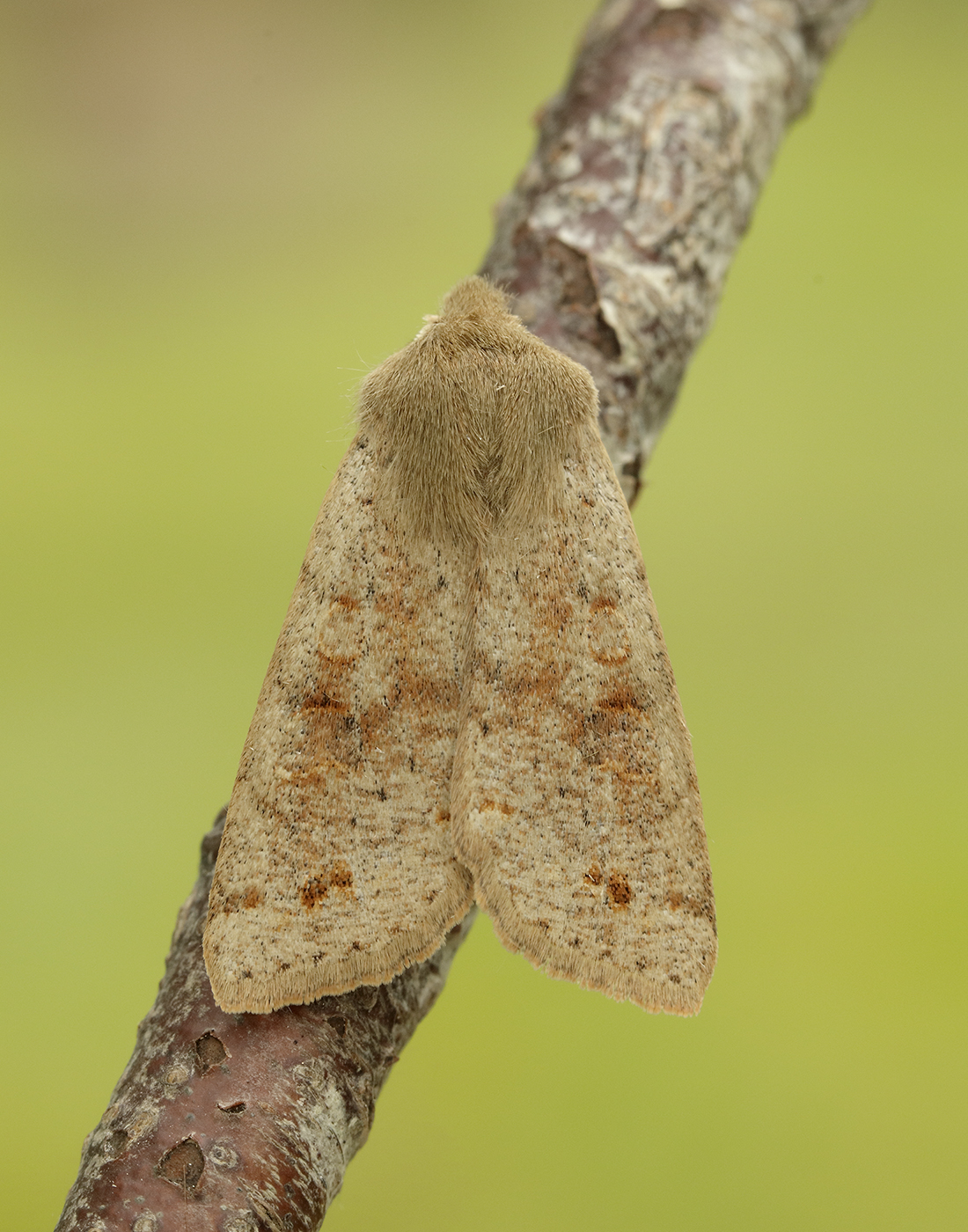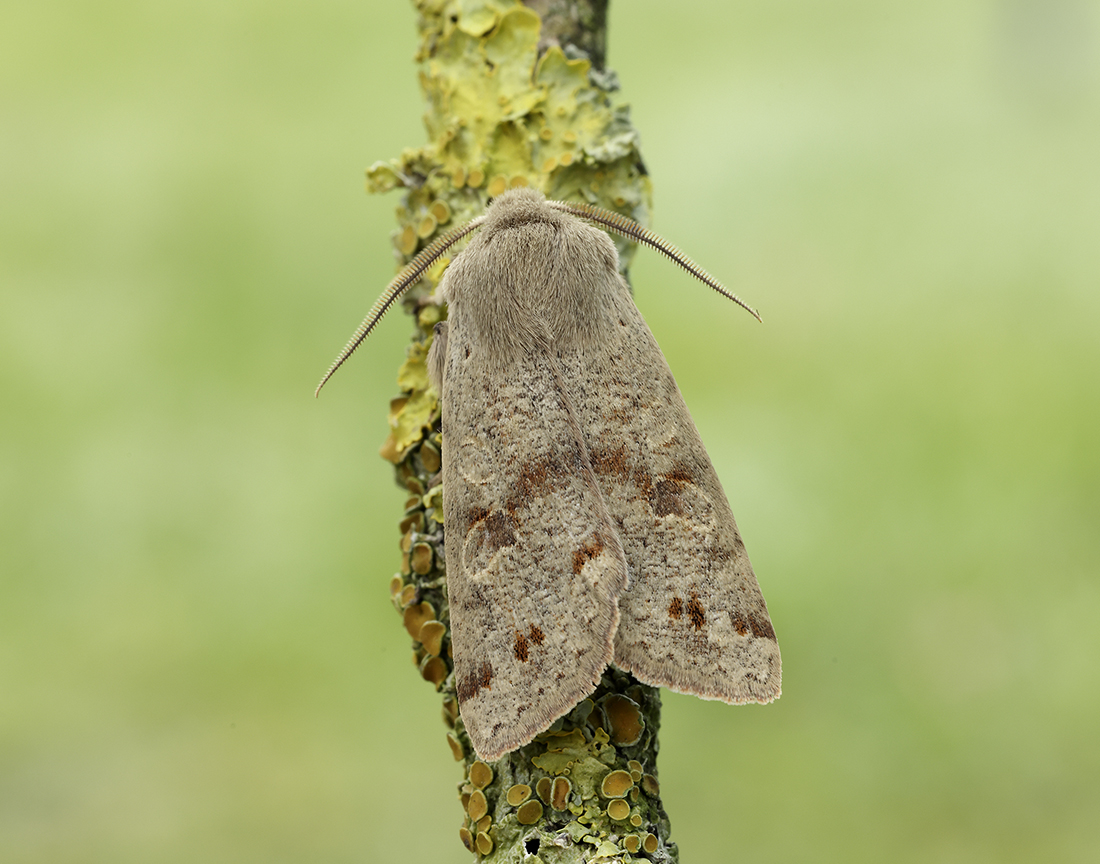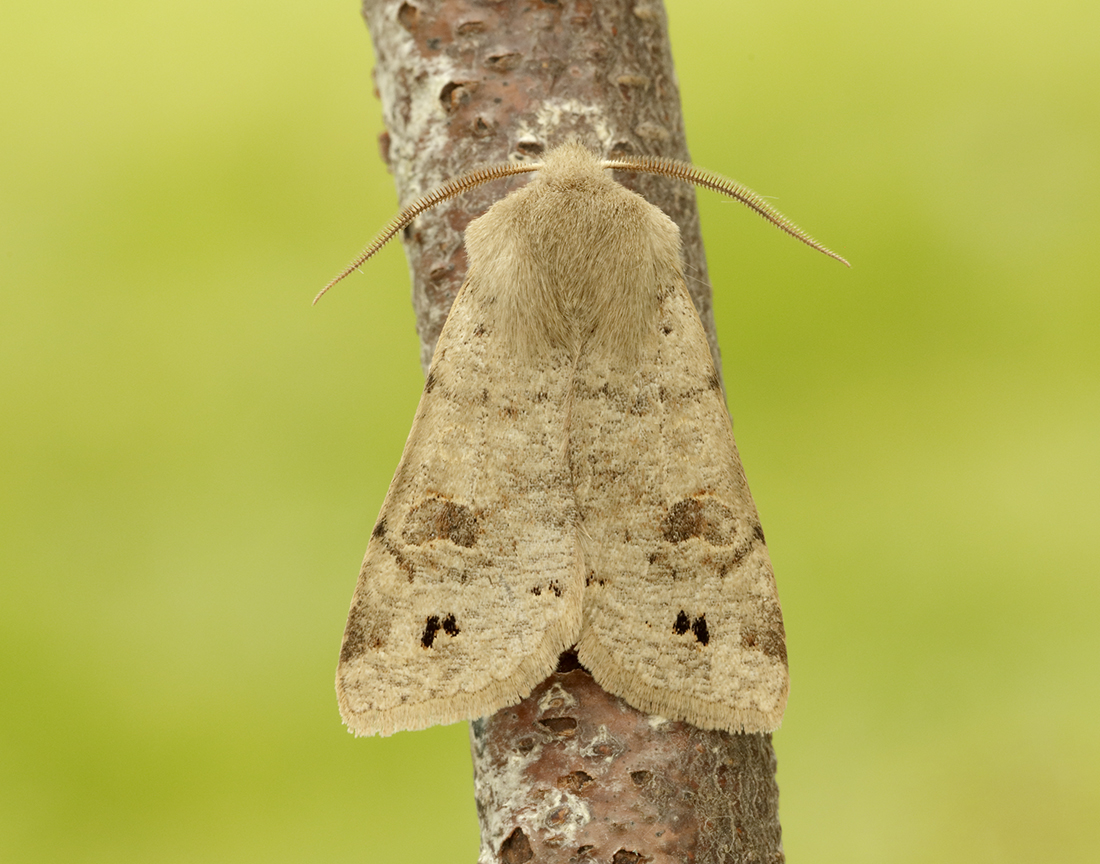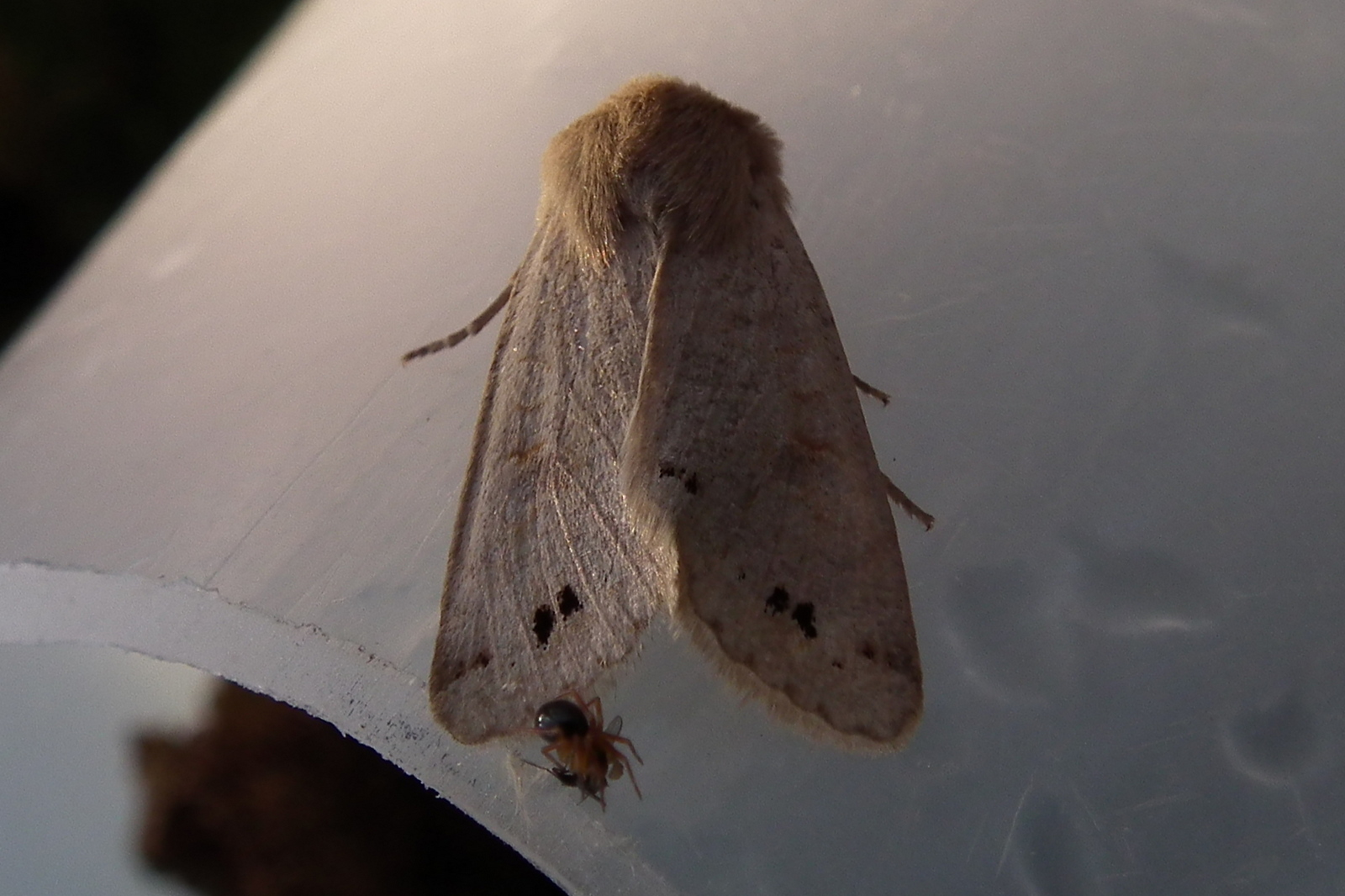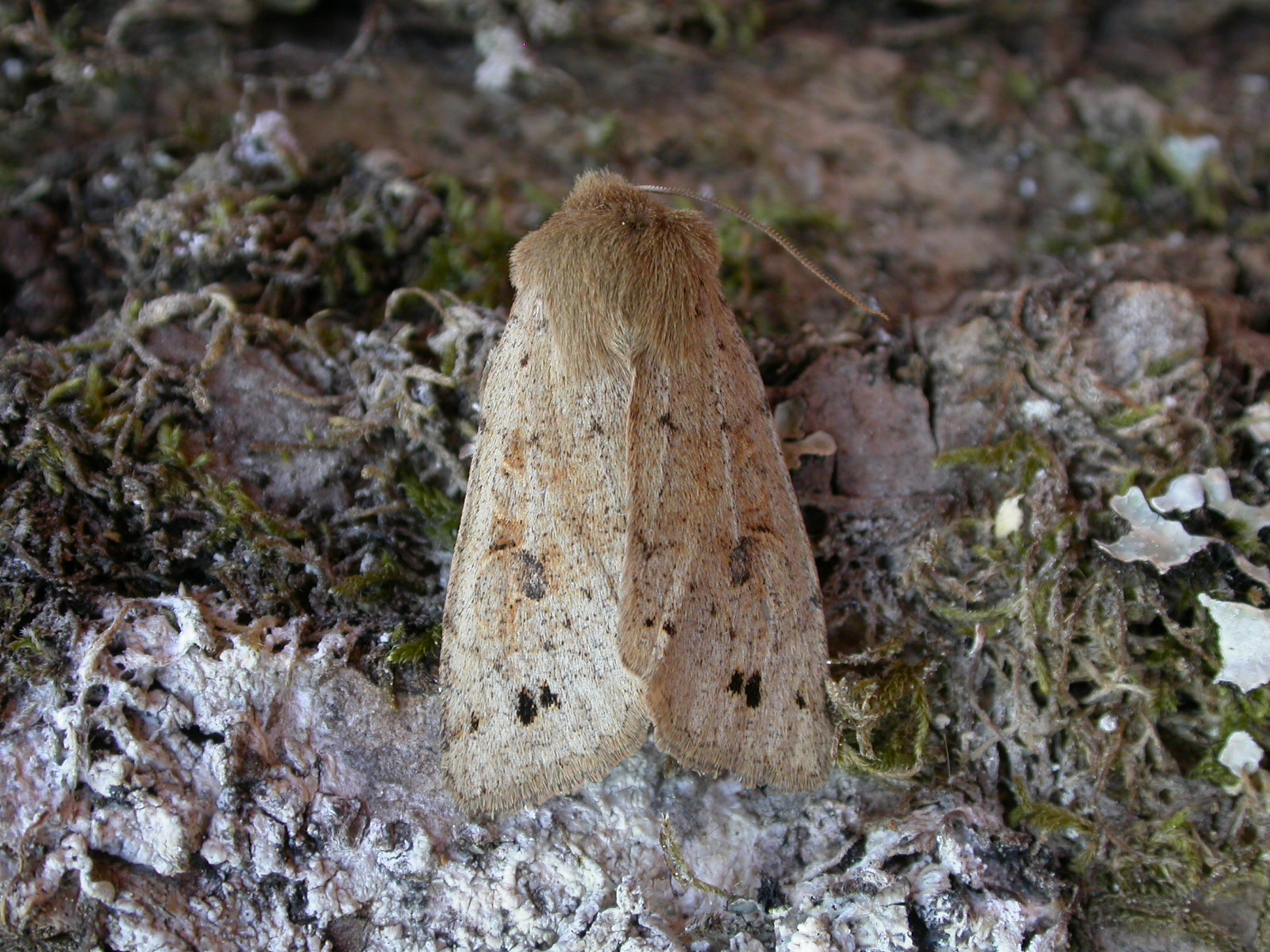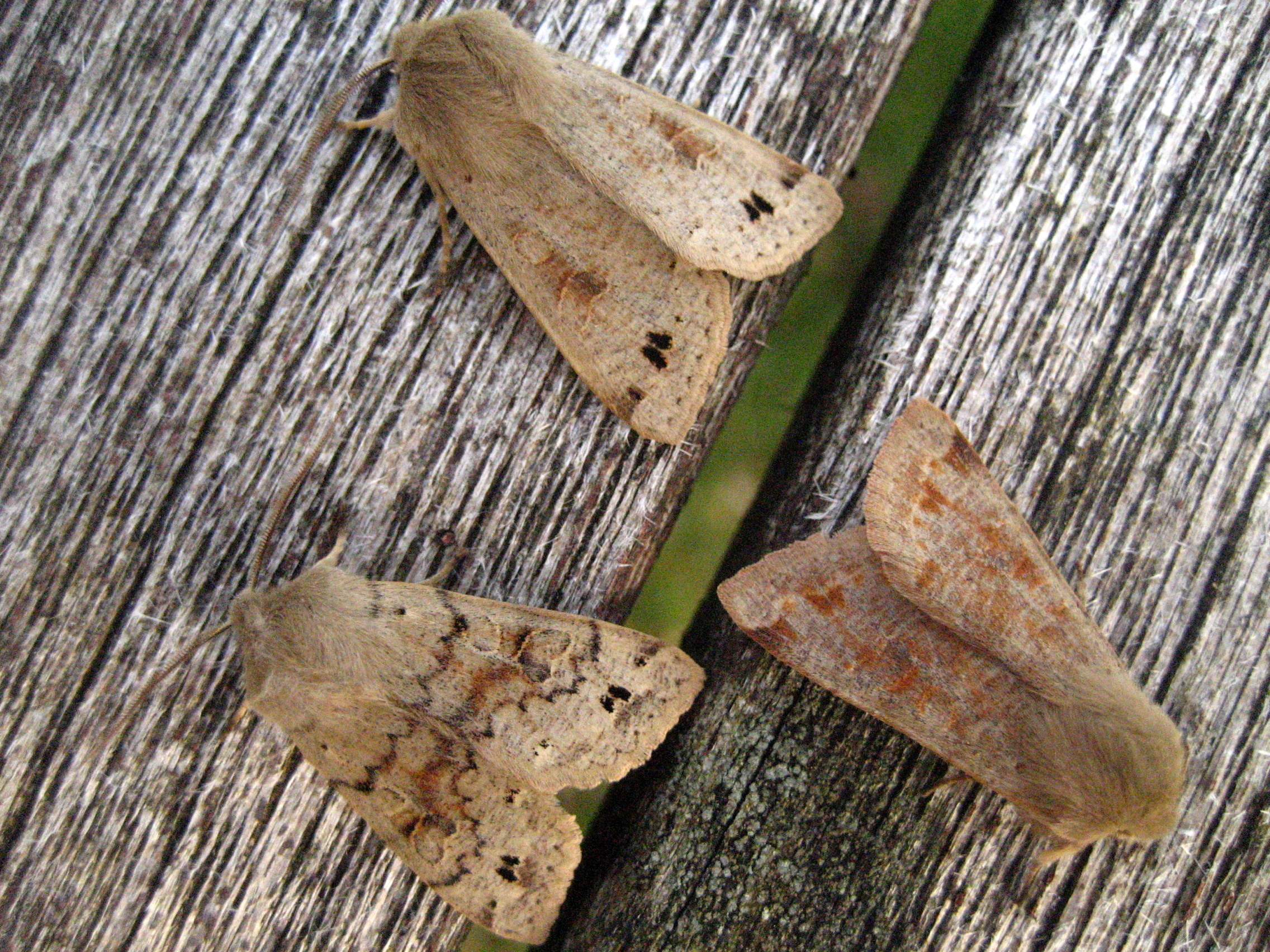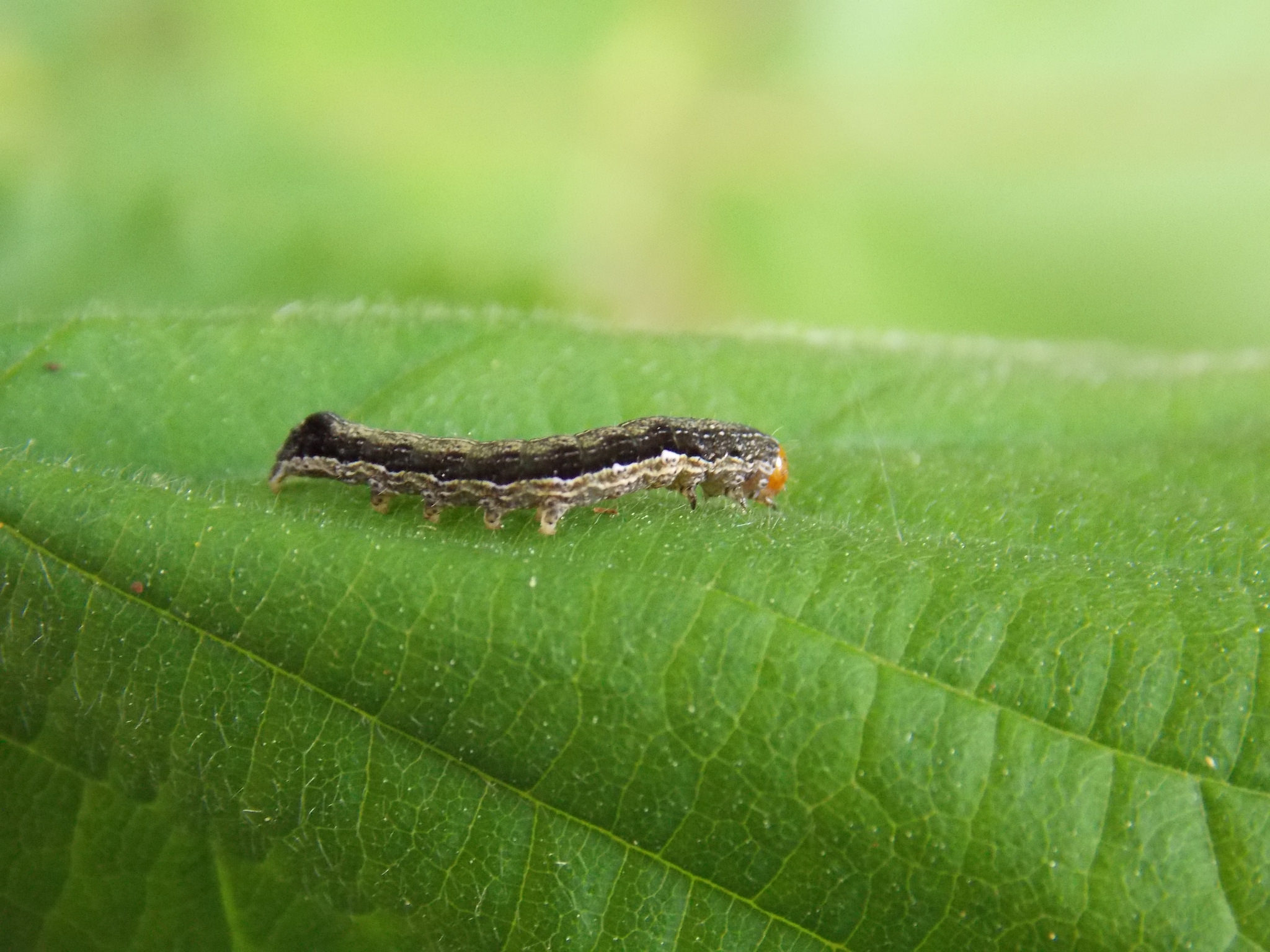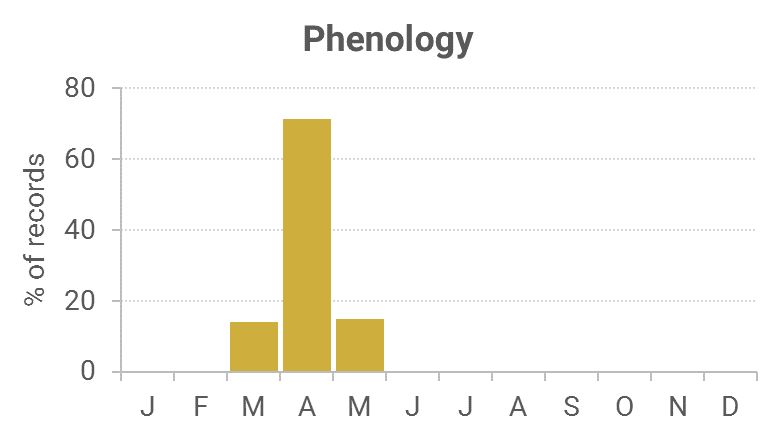Identification
The rather broad, curved costa on the tawny coloured forewing with two black spots on the inner edge of the pale outermost cross-line is diagnostic.
Recording Method.
Attracted to light, also comes to sugar and flowers.
Life cycle
One generation. Overwinters as a pupa in an underground cocoon. Larvae are present April to June, feeding by night.
Larval foodplants
Oaks, Aspen, sallows, Ash, Field Maple and Honeysuckle.
Habitat
Broadleaved woodland.
History
Lennon (1863) had found it near Marchmount, Dumfriesshire. Gordon (1913) had found it scarce, having only found the following, all on sallow blossom: one, 2nd April 1899, two, 14th April 1911, and two again on 2nd and 3rd April 1912.
Archibald Russell (1944) listed it as occurring near Gatehouse of Fleet (VC73) during the years 1942-43. Sir Arthur Duncan (1909-84) during his lifetime had found it at Tynron and Castlehill, Dumfries.
During 1974-92 six of the Rothamsted stations recorded 150 records, Caerlaverock not recording it.
From 1992 to 2010 the regular trapped sites at Kirkton, Cally Woods, Durisdeer, Forest Moor and Bargaly Lodge provided a good number of records with others from widely scattered sites across the region.

